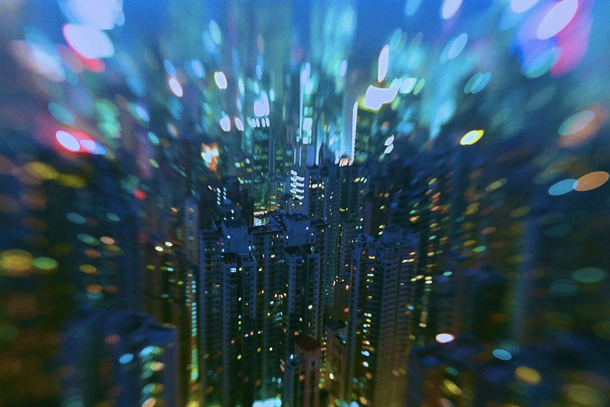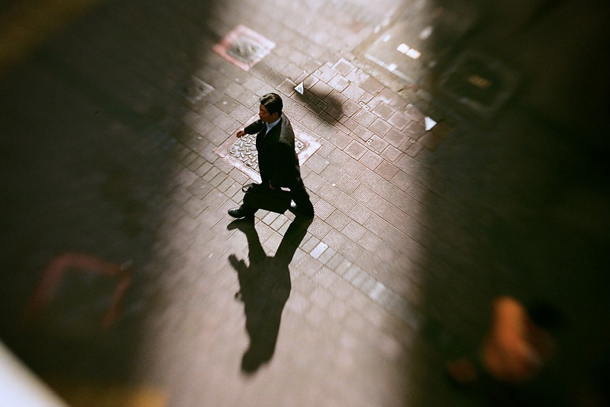In a fast moving world where everything’s so complex and complicated, couldn’t we all do with more simple things. Aren’t the best things in life simple? In other words, isn’t the immediacy of the LCD the bane of photography’s magic. Doesn’t digital technology somewhat cheapen the value of an image. How about a roll of 36 exposures. Yes, that will slow you down and make you become more aware. Of everything. Words by Vincent Laforet, on a recent stopover in Hong Kong, met up with Kai, the guy from DigitalRev everyone loves.
Kai challenged Laforet with a Cheap Camera Challenge, meaning a shoot with a trusted Canon A2E, a Lensbaby lens and two rolls of film.
Says Laforet:
I can tell you it was terribly refreshing to shoot film. We had no plan. No script, no storyboards or teams of folks working on a crew. We didn’t even know where to go nor have anything set up to shoot. This was my last day in Hong Kong and the only deadline was a flight at 11:45 p.m. that very evening. That gave us a healthy four hours to shoot 72 exposures on good old celluloid. No LCDs to “chimp” with (a term we use to describe the act of looking at a rear LCD and jumping up and down and showing your friends as you see a nice photo…).

Yes, nervous he was for not having the cushion of being able to track progress on a rear LCD, to delete and hide the embarrassing shots. Well yes, doesn’t an LCD let you gain false comfort in confirming that, well, there’s at least one good shot… Just delete the rest. Will you. Quickly!!
Turned out it was one of Laforet’s most relaxing shoots he had in a long, long time. He didn’t even care how the pictures turned out.
An eye opener experience, he says:
Stopping amidst the chaos of the city and waiting for the shot was therapeutic in a way digital photography generally isn’t. For one of the shots, I actually stood in place for more than ten minutes. I slowed my breathing, braced myself and relaxed. And waited. For a picture that might never come. And it felt good.
It was just so refreshing to stop. To pause. To wait. To not know the outcome of a shutter press. To not get that instant gratification. As scary as “not knowing” can be — there’s something terribly peaceful about it, if you come to accept it.

Film forced him into the simple act of “taking my time” and gave him the peace of mind for the, how should one say, “real still photograph”…
The immediacy of the LCD, says Laforet, has changed the craft of photography. It’s made it so much easier to learn quickly, to grow and to take much greater chances and push the envelope much further. Digital has in many ways replaced the word “craft” with “accessible” — or perhaps the better word is “democratization.”
Yet something went amiss. Maybe a bit of the “magic” of photography? Laforet:
There’s nothing quite like seeing a print come to life in the developer tray in the darkroom. Also, a certain type of discipline is instilled in you when you are faced with a 36 exposure roll and the cost associated with it, not to mention the cost of getting it processed and printed. These days I more often than not read 999 on the still camera’s LCD when a large CF Card is in place. Where’s the challenge in that?

No delete button, no way to erase your mistakes. You better study the craft before it gets expensive. Digital technology somehow cheapened the value of an image.
Which digital photographer doesn’t develop a bad tendency to lead to a bit of laziness and impatience. Not to mention our attention spans.
Laforet concludes:
As the world continues to move faster and faster, as processors, resolutions, dynamic ranges and terabytes keep increasing at an exponential rate, sometimes I think we could all do with a roll of 36 exposures.
Wise stuff! Now always remember to take a role of film in a fast moving world.
Oh, here’s the DigitalRev video of the Laforet shoot — samples of his cheap camera film exposures you find right here:


